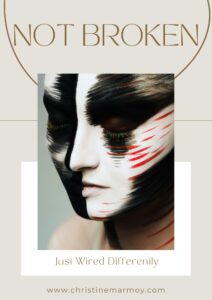
Learning from Autistic Teachers: How to Be a Neurodiversity-Inclusive School is an insightful anthology edited by Dr Rebecca Wood, Dr Laura Crane, and Professor Francesca Happé, published in 2022. If you are looking for lived experience and true stories, then this book is for you. I actually used this book for my PhD research. This collection brings together narratives from autistic educators and school professionals, offering a unique perspective on the challenges and successes they encounter within the educational system.
The book is structured into four distinct parts, each addressing critical aspects of the autistic teaching experience:
1. Understanding Autistic Teachers
This section delves into the personal experiences of autistic educators, highlighting how their unique traits influence their teaching methods and interactions. For instance, Pete Wharmby discusses the role of special interests in maintaining classroom engagement, while Alan Morrison reflects on coping with change in a school setting. Yasmeen Multani emphasises the importance of mentorship for autistic staff, and Kieran Rose explores the marginalisation resulting from ableism in schools.
2. Intersectionalities
Here, the focus shifts to the diverse identities within the autistic community. Contributors like Madge Woolard and Jade Ponnudarai share their experiences as autistic individuals navigating additional layers of identity, such as race and gender. These narratives underscore the need for a nuanced understanding of intersectionality in fostering genuinely inclusive educational environments.
3. Facilitating Inclusion
This segment explores strategies to create more inclusive schools. Elkie Kammer recounts her journey as an ‘unusual teacher,’ advocating for acceptance of diverse teaching styles. Joan McDonald discusses her role as a Special Educational Needs Organiser, emphasising collaboration between autistic staff and their neurotypical colleagues. Dr. Ruth Moyse highlights the benefits of partnership approaches, and Andrew Miller reflects on learning about autism from his students.
4. Strengths and Leadership
The final section celebrates the strengths autistic educators bring to leadership roles. Lucy Coward discusses utilising these strengths in teaching, Mica Jayne Coleman Jones navigates the teaching profession as an autistic individual, and Claire O’Neill shares how her autistic traits contribute to her effectiveness as a school leader.
Collectively, these narratives challenge prevailing assumptions and stereotypes about autism in the teaching profession. They highlight the unique strengths autistic staff offer, such as deep subject knowledge, innovative problem-solving skills, and empathetic connections with neurodivergent students. The contributors also candidly address systemic barriers, including sensory-unfriendly environments and rigid workplace structures, which can hinder the retention and success of autistic professionals.
A recurring theme is the critical need for reasonable adjustments and accommodations to effectively support autistic educators. The book advocates for systemic changes to create environments where neurodivergent teachers can thrive, thereby enriching the educational landscape for all.
“Learning from Autistic Teachers” serves as a vital resource for school administrators, policymakers, and educators who aim to reimagine schools as truly inclusive. By amplifying the voices of autistic professionals, it offers invaluable insights into creating supportive environments that recognise and celebrate neurodiversity, ultimately benefiting both staff and students.
This book is available on Amazon.
(Affiliate link)

 “Get Your Free Ebook: NOT BROKEN”
“Get Your Free Ebook: NOT BROKEN”